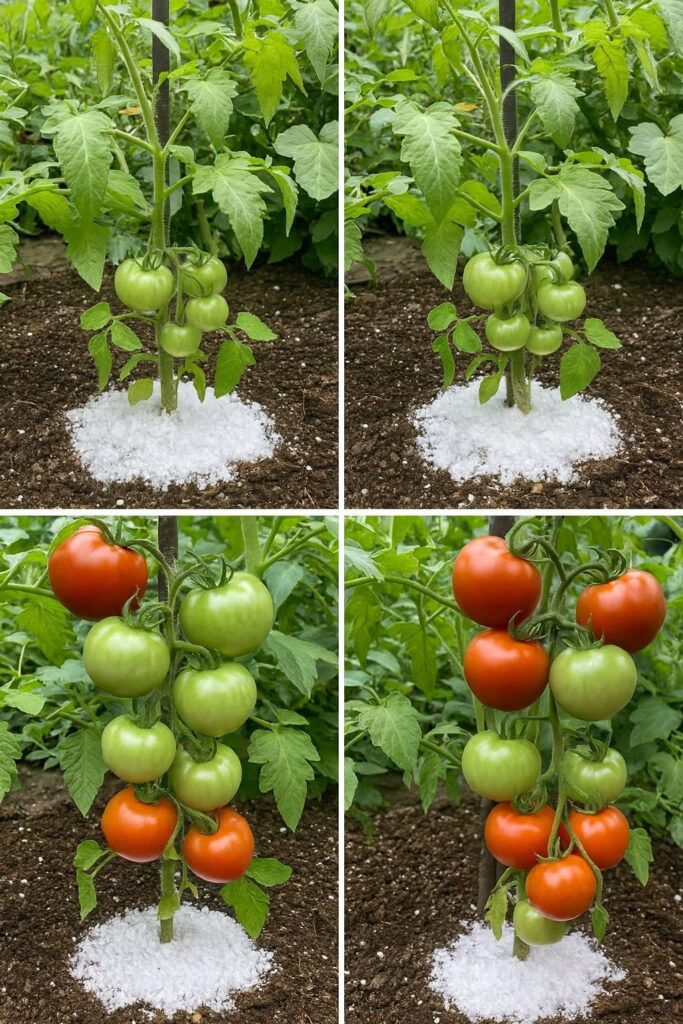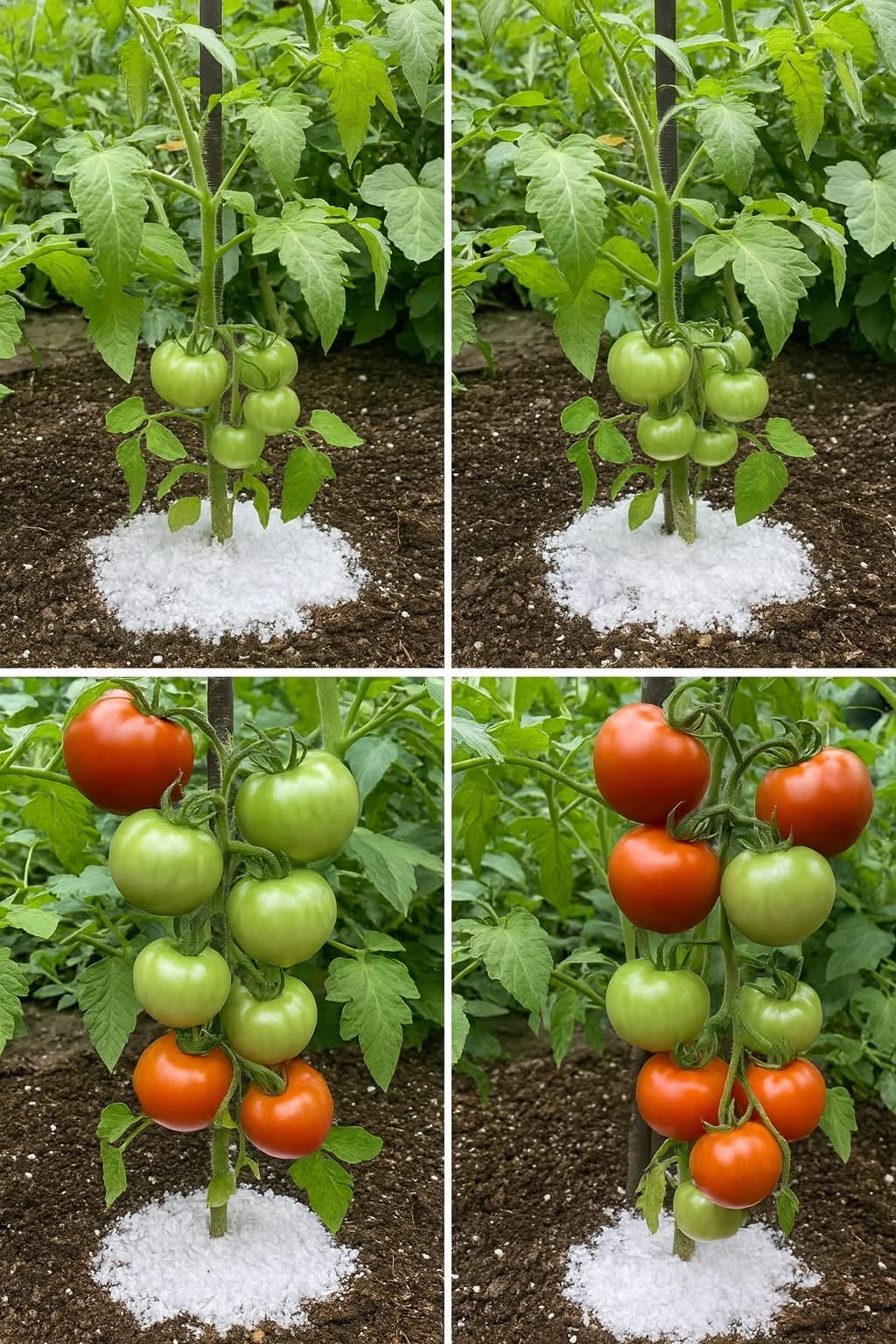
Introduction
Tomatoes are among the most rewarding crops to grow in a home garden. With the right care, a single plant can yield dozens of juicy, flavorful fruits. However, tomato plants are heavy feeders that require proper nutrition throughout their growing stages. In the image above, we see a tomato plant thriving with the help of a simple yet powerful soil amendment — Epsom salt (magnesium sulfate) or a similar white granular fertilizer applied around the base of the plant.
Understanding the Growth Process
Tomato growth follows a fascinating transformation:
- Early Stage (Top Left Image): The young green tomatoes begin forming clusters. At this point, the plant focuses on leaf and stem development, drawing nutrients from the soil.
- Mid Stage (Top Right Image): The fruits enlarge, demanding more magnesium and potassium to support photosynthesis and strengthen the fruit walls.
- Ripening Stage (Bottom Images): The tomatoes gradually turn from green to red, a process driven by the production of lycopene and carotenoids — plant pigments that require sufficient magnesium and sunlight.
The Role of the White Substance (Epsom Salt)
The white material around the plant base is likely Epsom salt (magnesium sulfate) or perlite mixed fertilizer. Epsom salt is a gardener’s secret weapon for tomatoes. Here’s why:
Benefits of Epsom Salt for Tomatoes:
- Boosts Magnesium Levels: Magnesium is crucial for chlorophyll formation and efficient photosynthesis.
- Enhances Fruit Development: Encourages larger, juicier, and more flavorful tomatoes.
- Improves Nutrient Absorption: Helps plants better utilize nitrogen and phosphorus from the soil.
- Prevents Yellow Leaves: Reduces magnesium deficiency symptoms, keeping foliage lush and green.
- Encourages Ripening: A balanced supply of magnesium supports pigment development in fruits.
How to Use Epsom Salt Correctly
To use it effectively:
- Soil Application: Mix 1 tablespoon of Epsom salt into the soil per plant once every 2–3 weeks.
- Watering Solution: Dissolve 1 tablespoon in 4 liters of water and apply to the soil around the base of the plant.
- Foliar Spray: Mix 1 tablespoon in 1 liter of water and spray onto leaves for quick absorption. Tip:** Avoid overusing Epsom salt. Too much magnesium can interfere with calcium uptake, leading to blossom end rot.
Additional Growing Tips
- Sunlight: Ensure your tomato plants receive at least 6–8 hours of direct sunlight daily.
- Watering: Keep the soil consistently moist but never waterlogged.
- Mulching: Add organic mulch around the plant base to retain moisture and reduce weed growth.
- Staking: Support your plants using stakes or cages to prevent fruits from touching the ground.
- Pruning: Remove lower leaves to improve air circulation and reduce disease risk.
Nutritional Benefits of Tomatoes
Tomatoes are a powerhouse of nutrients:
- Rich in Lycopene: A potent antioxidant that supports heart health and may reduce cancer risk.
- High in Vitamin C: Strengthens immunity and skin health.
- Contains Potassium and Folate: Supports muscle function and reduces fatigue.
- Low in Calories: Ideal for a healthy diet.
Conclusion
The progression shown in the image demonstrates the power of proper fertilization and care. A small amount of Epsom salt or balanced organic fertilizer can dramatically enhance the health and productivity of tomato plants. When combined with sunlight, water, and attentive gardening, this simple technique can turn your garden into a tomato paradise bursting with color and flavor.
